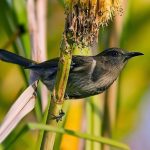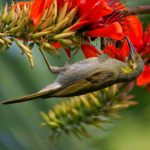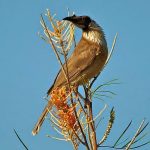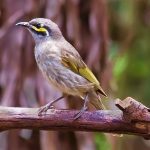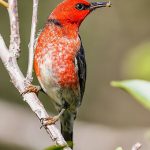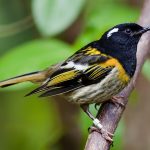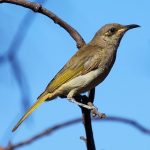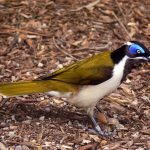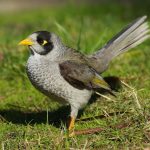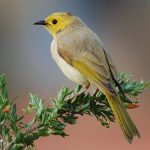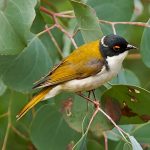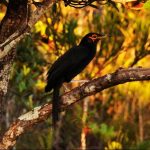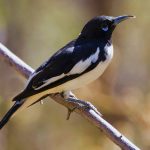Striped honeyeater

 |
| Photo by David Cook (Flickr) |
Common name:
striped honeyeater (en); melífado-lanceolado (pt); méliphage lancéolé (fr); mielero lanceolado (es); strichelhonigfresser (de)
Taxonomy:
Order Passeriformes
Family Meliphagidae
Range:
This species is endemic to Australia, being found in eastern Australia, from mid-northern Queensland to northern Victoria and west to the York Peninsula, especially inland from the Great Dividing Range.
Size:
These birds are 20-25 cm longand have a wingspan of 28-36 cm. They weigh around 40 g.
Habitat:
The striped honeyeater is mostly found in dry forests and savannas, namely Casuarina, Eucalyptus, Acacia and native pines, and especially along rivers and streams. They are also found in swamp forests and mangroves, dry scrublands, hot deserts, rural gardens and even within urban areas.
Diet:
They mainly feed on insects and spiders, also taking fruits and berries, seeds, nectar and other plant sugars.
Breeding:
Striped honeyeaters breed in July-January. The nest is a suspended cup made of grasses and plant fibres and lined with fine grasses and feather, including emu feathers. It is placed at the lower end of big mistletoes or drooping branches of trees, 1-6 m above the ground. There the female lays 2-5 cream-coloured eggs with light-brown speckles, which are incubated by both sexes for 14-17 days. The chicks are fed by both parents, and sometimes also by helpers, fledging 15-17 days after hatching.
Conservation:
IUCN status – LC (Least Concern)
This species has a very large breeding range but is described as rather uncommon. The population is suspected to be stable in the absence of evidence for any declines or substantial threats, so it is not considered threatened at present.
